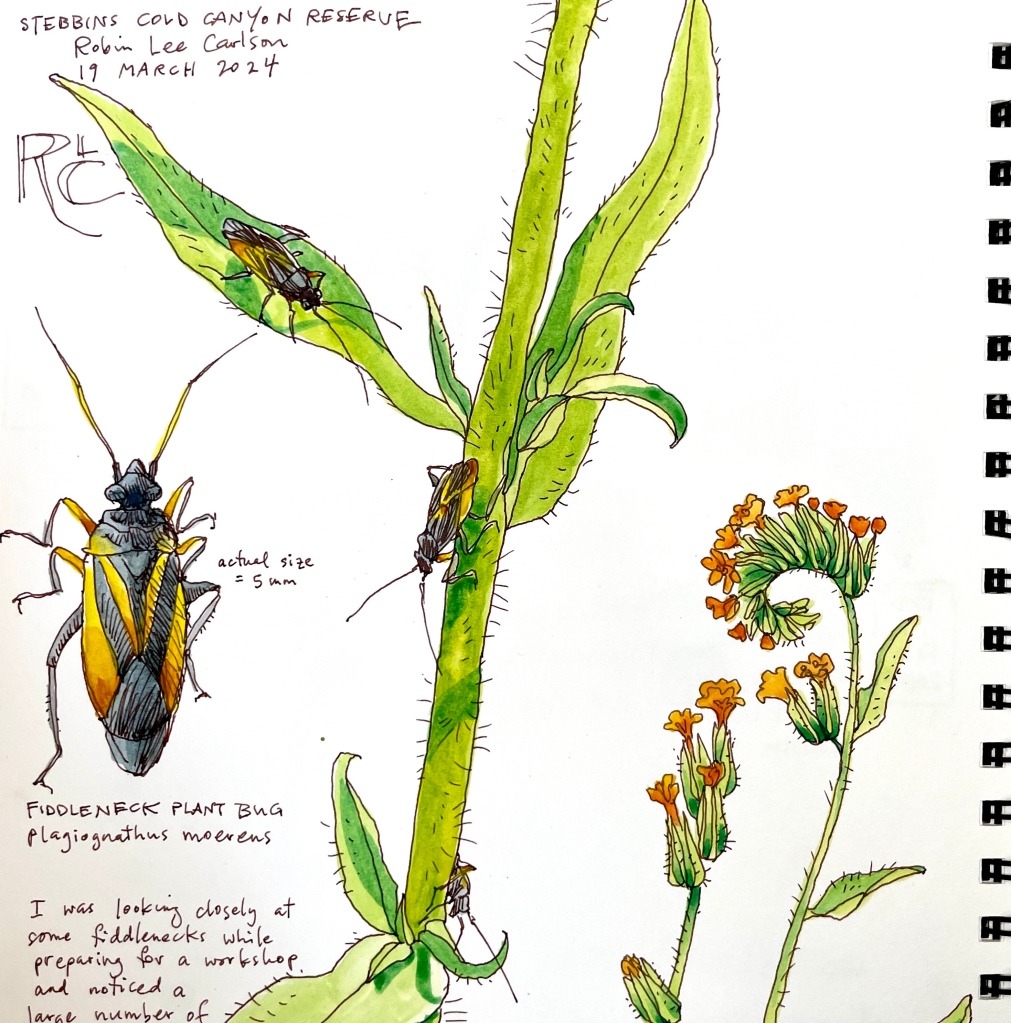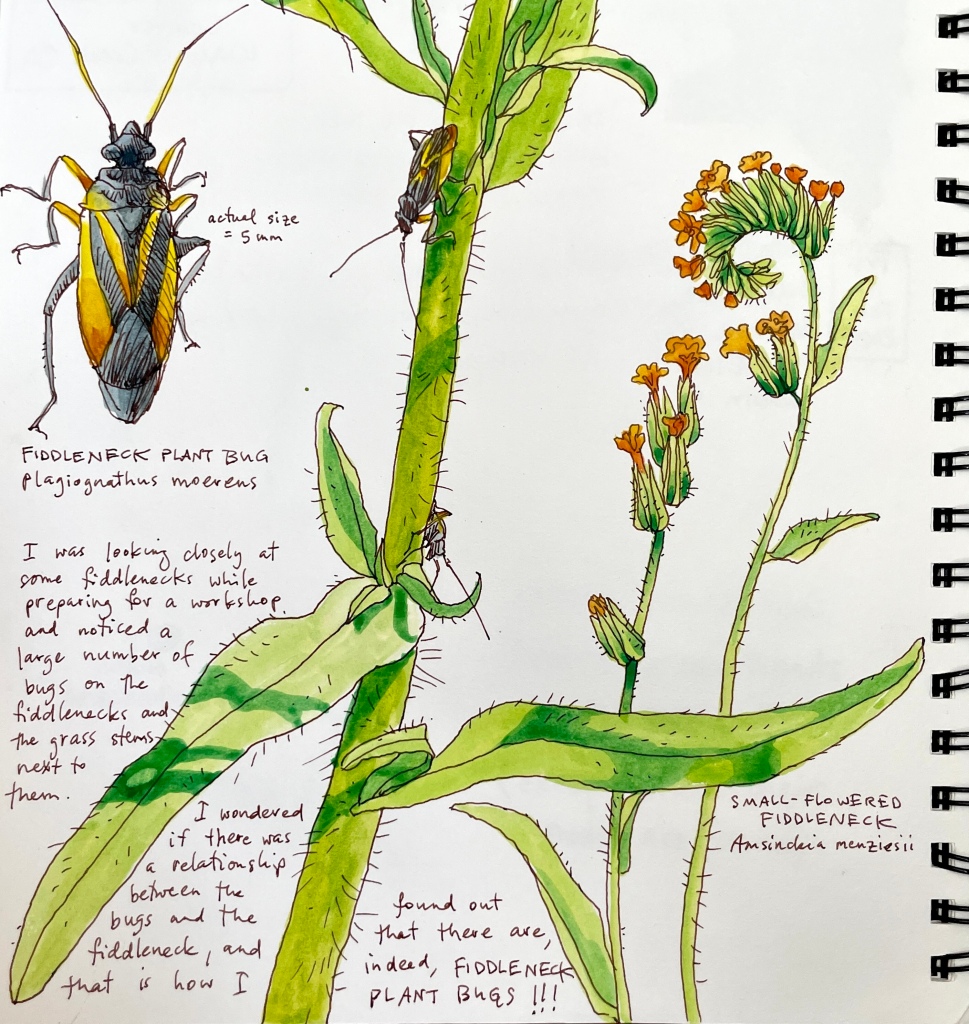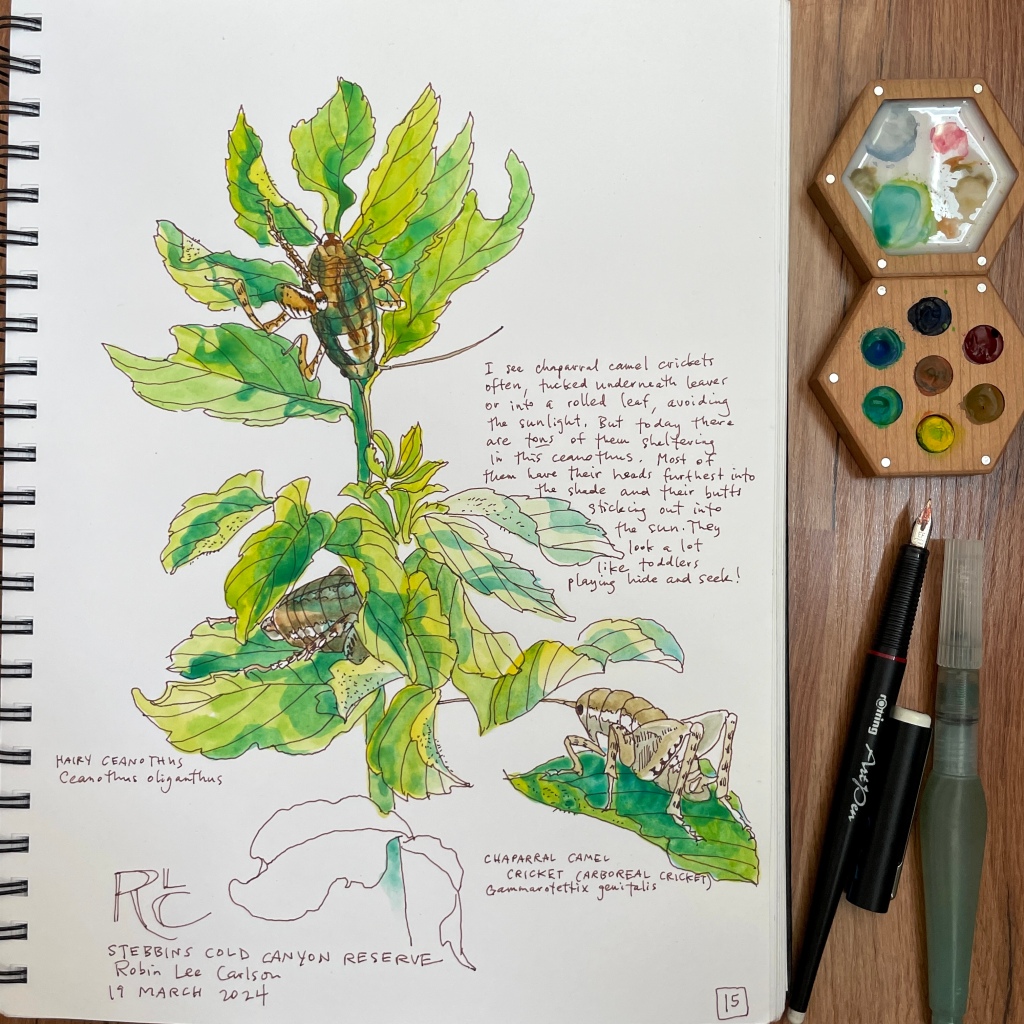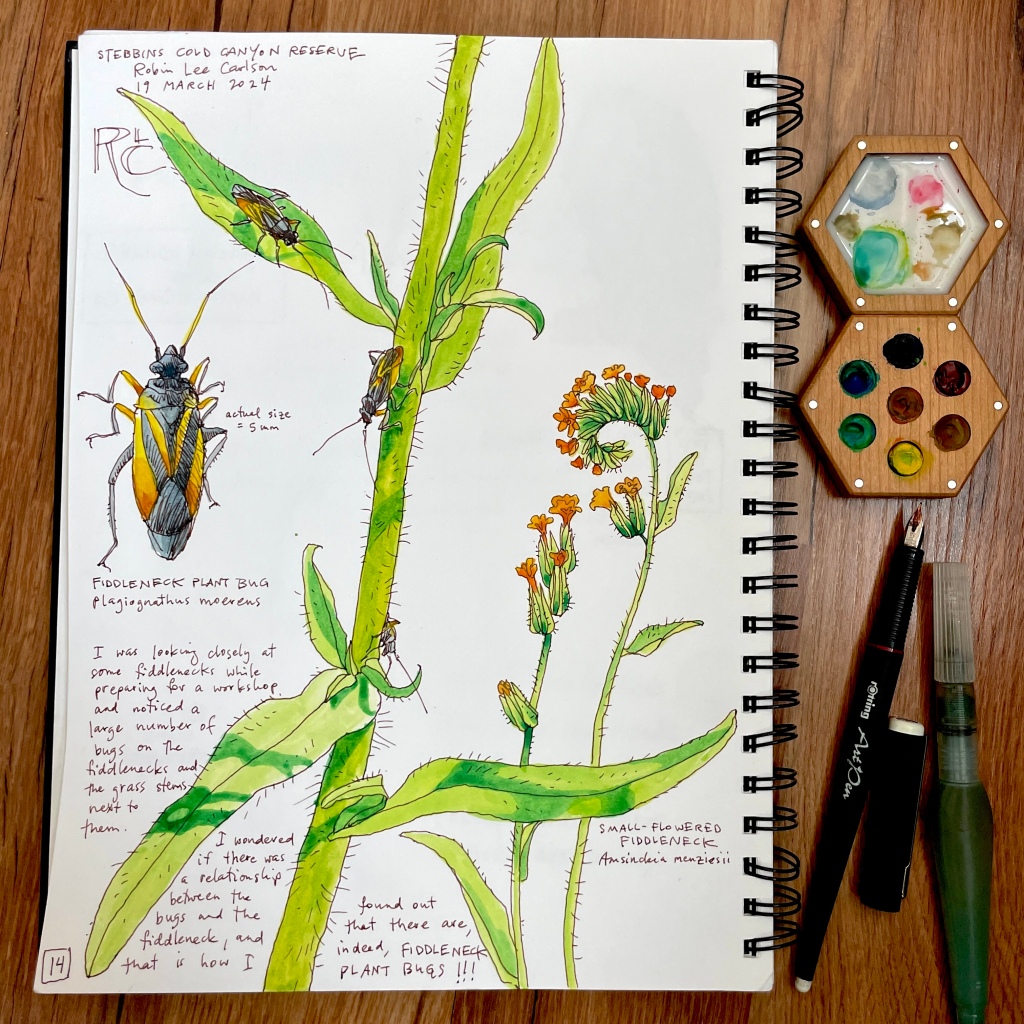Lost in the fuzzy whorls of smallflower fiddleneck (Amsinckia menziesii), I was sketching in preparation for a wildflower nature journaling workshop in Stebbins Cold Canyon. It gradually dawned on me that the stems and leaves of the fiddlenecks, along with the weedy grasses around them, were covered in little bugs. True bugs (Hemiptera) that I was not familiar with. I wondered if they were associated with the fiddleneck, or just there coincidentally.

And that is how I found out that there are, indeed, fiddleneck plant bugs (Plagiognathus moerens)! Like all plants bugs, they having sucking mouthparts that allow them to feed on growing shoots, seeds, and fruit. They are quite small, about 5 mm, but looking closely I could see that they have lovely orange stripes to help camouflage them on the fiddleneck.

On the day of the workshop, I was pleased to run into a surprising bumper crop of chaparral camel crickets (Gammarotettix bilobatis [I misidentified the species name in the drawing—G. genitalis is found more to the south]). I see these arboreal crickets often in Cold Canyon, but usually only one or two at a time. Reading about them after the visit, though, it appears that this gregarious behavior is common for the species, and Ceanothus is one of their host plants. Other host plants of theirs that occur in the Reserve are California buckeye, toyon, and California bay-laurel.

Because they are nocturnal, they try to find shady hiding places during the day, and are often tucked into rolled up leaves or hiding against the stems of the plant, under the protection of other leaves. They have a marked preference for putting their heads into the darkest spots, which meant that I was looking at a sprouting Ceanothus with ten or twenty cricket posteriors peeking out. It very much reminded me of a small child, or maybe my cat, thinking they are hidden while their butt is still sticking out.


Leave a comment